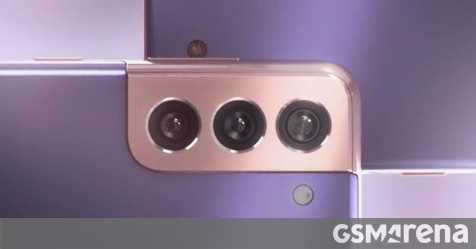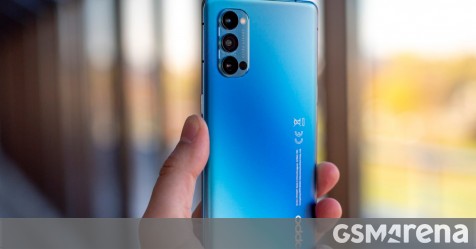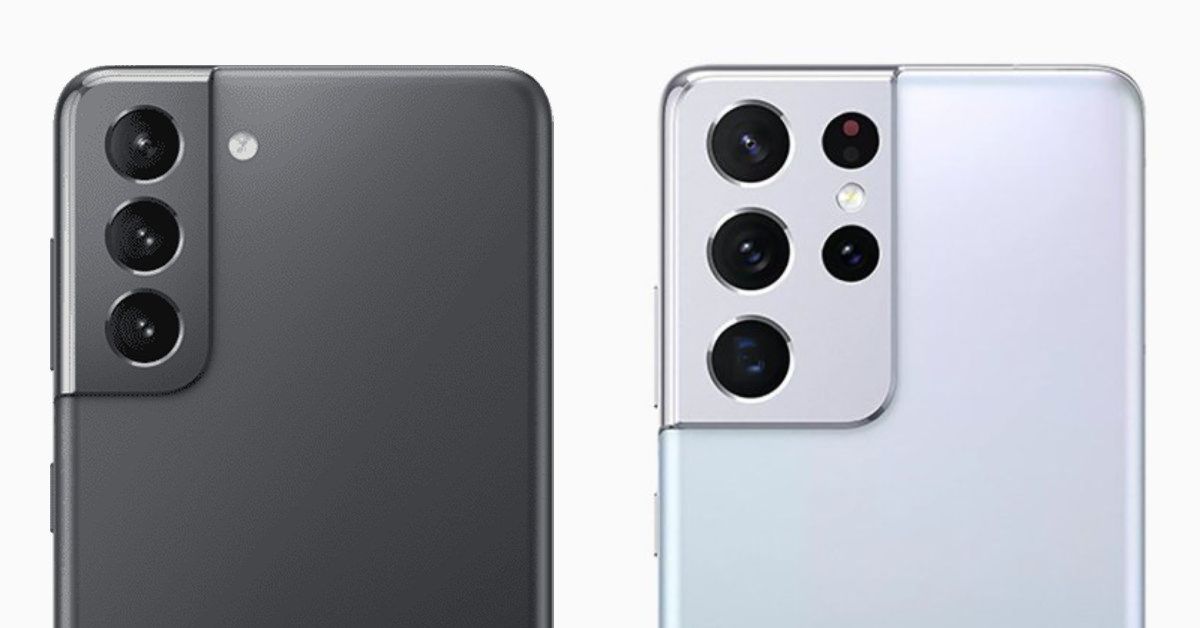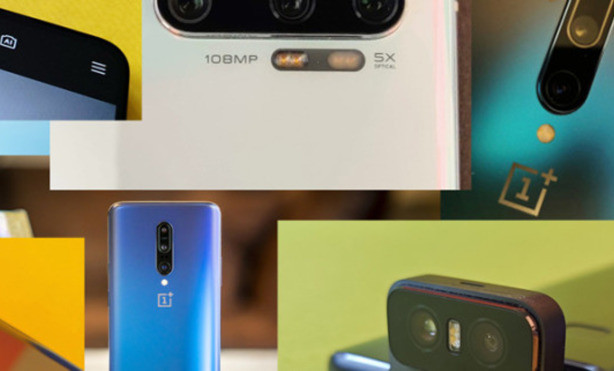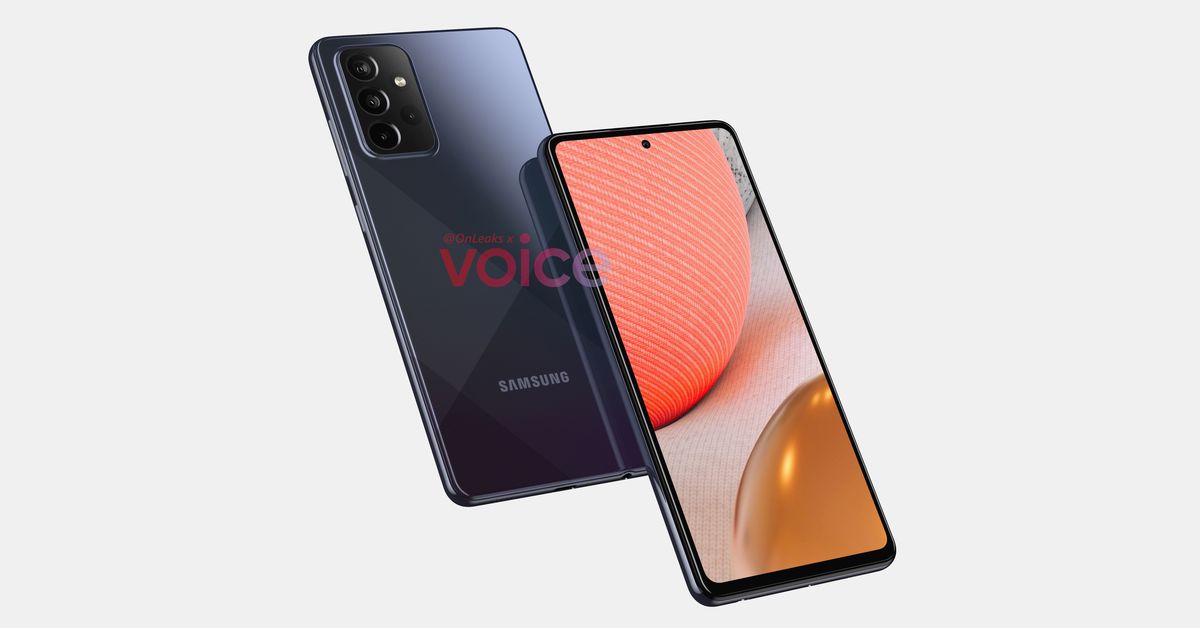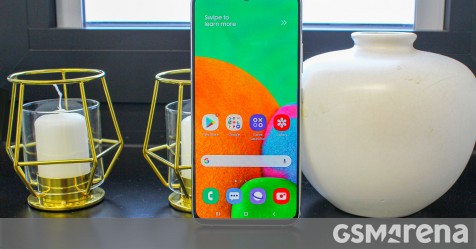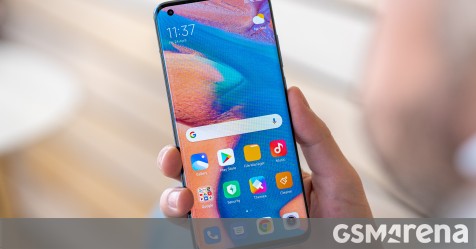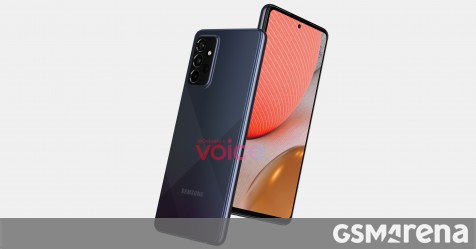Testing Tests overview Smartphone Asus ROG Phone 3 in the test: Perfect gaming smartphone LG Wing in the test: 1, 5 displays and gimbal cam Nokia 3.4 in the test: update promise for little money Smartphone Realme 7 in the test: 90 Hertz at a budget price Realme 7 Pro in the test: OLED display and 65 – Watt loading Huawei Mate 40 Pro in the test: Great, but without Google Samsung Galaxy M 21 Test: Solid cross-country skier at a budget price Smartwatch Samsung Galaxy Watch 3 in the test: competition for Apple? Huawei Watch GT 2 Pro in the test: Smartwatch with cross-country battery Apple Watch: Smartwatch with contract from 15 € per month Buy Apple Watch 6: All generations in the price check Skagen Falster 3 in the test: Smartwatch with Wear OS Test Huawei Watch GT 2: Noble fitness tracker in watch form Huawei Watch GT in the test: record-breaking battery life Multiroom Bose Portable H ome speaker in the test: battery, WiFi, Airplay 2 Sonos Move in the test: the robust all-rounder Musiccast: Multiroom from Yamaha in the test Denon Heos in the test: Versatile multi-room system Flat soundbar Teufel Sounddeck Streaming in the test Teufel Raumfeld in the test: rich multiroom sound Technisat Digitradio 580 in the test: The gray all-rounder Keyfinder Tile Slim (2019): Key finder in credit card format Bluetooth key finder Tile Pro in the test: 122 m range! Key Fin the Tile Pro in the test: the range champion Orbit Bluetooth tracker in the test: looking for wallet and keys Nonda iHere 3.0: smart key finder in the test Chipolo Classic and plus: Bluetooth key finder in the test Musegear finder 2: Key finder without registration obligation Action-Cam DJI Pocket 2 in the test : Zoom and 64 – Megapixel sensor Actioncam Insta 360 One R: 1-inch image sensor in the test Gopro Hero 8 Black in the test: Back to the top Insta 360 One R in the test: The modul are Actioncam Motorola Moto G8 Plus test: Great smartphone, but … Insta 360 Go: Micro-GoPro in the test Motorola One Action Test: good hardware, bad camera microSD In the test: Kingston UHS-I U3 microSDXC Kit MicroSD card for smartphone: Samsung Evo Plus 2017 Test report: Lexar Professional 1800 x microSDXC Kit Test report: Intenso Premium microSDXC card with 64 GByte Android Sonos Move in the test: The robust all-rounder Honor 20: Inexpensive high-end smartphone in Test Xiaomi Mi 9: Top technology at a bargain price Doogee S 90 in the test: modular outdoor smartphone ZTE Axon 10 Pro in the test: high-end phone at a competitive price Motorola Moto G7 Power in the test: large battery , small price Sony Xperia 10: Smartphone with 21: 9 display under test Counselor Advisor overview Purchase advice Bargain: Which Fire TV -Stick from 19 € is the right one? Purchase advice: What good is a leaf blower with a battery for 45 Euro? True wireless headphones: How much do you have to invest? Buying advice water cooling: High-end PCs cool better Guide: Air conditioning and fan against the heat wave Sony shows the Xperia 1: Is the predecessor XZ3 worth it now? Purchase advice: Current headphones with ANC to 360 Euro Practice Caution, money away: Kickstarter & Co. are not shops Switch off Android notifications from annoying apps This is how it works: Now install the new Android L keyboard ren Tip: Use “Ok Google everywhere” in Germany In the test: Does the jailbreak work for iOS 7.1? Goderma and mobile medicine: The doctor apps are coming ! Instructions: Jailbreak for iOS 7 on iPhone 5S, 5, 4S and 4 Technology Importing technology from China, part 2: Customs, taxes and tricks Drones & copters: From toys to FPV racers What does the end of an ecosystem mean? Smartphones with a flexible display: What’s in it for me? Smartphone processors at a glance: Everything Snapdragon? Evolutionary dead ends: the very worst cell phones mpass: Pay with the NFC mobile phone – or the NFC toilet roll Display calculator Calculate pixel density, number and display proportion Best list Test winner Price comparison Price comparison overview Smartphones from Android 7.0 Phablets with stylus Fitness tracker with GPS Bluetooth headphones with ANR Drones with GPS Video TechStage Best list Top 10: These are the best smartphones 2020 Beginning Place 1 Place 2 3rd place 4th place Pla tz 5 Place 6 Place 7 Place 8 Place 9 Place 10 Conclusion Comments from Stefan // 17. 12. 2020 13: 37 Clock
Dozens, if not hundreds, of smartphones are in 2020 hit the market, most but are hardly worth more than a side note. But there are exceptions: We have the best smartphones 2019 selected.
Does “the best” smartphone even exist? From a purely objective point of view, probably. At least in the typical schoolyard quartet, technical data can be compared with one another without any value and in the end there is theoretically a winner, i.e. the best smartphone 2020. In reality, however, it looks a little different. Because, on the one hand, minor details often decide between victory and defeat, and in everyday life it is much more important how the things that are in the data sheet actually work. And even if we try to highlight such things in our tests, we often do not succeed fully due to the very limited test period.
Best example: Samsung Galaxy Note 20 Ultra (test report). The pen giant is undoubtedly an extremely good smartphone and there is hardly anything that the model does not offer. What was not noticed (or at least not as clearly) in the normal test period, but even more so in continuous use: The battery is too weak for a Note model. In addition, the upper half of the volume rocker in our test model gave way after a few weeks, it lost all pressure point and key travel, but can still be operated. Also never noticed with any other model: The note 20 All of a sudden on Google Maps the language information is no longer transmitted via the external, but the internal speaker. A few other apps also bitch on the device every now and then. Only a reboot will fix such problems.
And the third problem that simply riding around on technical data does not make sense: Ultimately, it always depends on your own usage behavior, whether the supposed lack of a feature bothers you or not. Therefore we say it bluntly: Our top 10 of the best smartphones 2020 is definitely subjective. We have the 10 devices that stuck in our minds. Not every user will be in our top 10, but that is – as described – in the nature of the matter. By the way: The one on the note 20 Ultra-described problems are not included in this top 10 . Because on the one hand it is still a really good smartphone, on the other hand we have hardly been able to test any other model over such a long period – so that would be unfair.
1st place: Xiaomi Poco F2 Pro So much power for buyers got so little money in a great overall package as with the Poco F2 Pro (test report) in 2020 on any other smartphone. For currently under 450 Euros are a Snapdragon 865, absolutely sufficient 6 GByte RAM, 128 GByte UFS memory and at least during the day a decent main camera (even if it is advertised as a quad cam …) including popup Front camera. The device provides the content on an almost 6.7 inch (approx. 17 cm) large OLED screen and ensures with its 4700 mAh strong battery for good runtimes. Android 11 is already available thanks to an update – what more could you want? A screen with more than 60 Hertz maybe, admittedly. If you are really looking for that, you will not find it here. All others are spot on and that’s why the device is in 2020 the number one.
2nd place: Samsung Galaxy S 20 FE 5G What, the Fan Edition in second place? But the Ultra can do a lot more! That’s right – nevertheless we just want to praise Samsung at this point: You can do it! At least in the 5G version, the FE gives users what the fan base wants: A Snapdragon processor – 820, which not only has more power, but also less hunger for electricity. Everything else is almost on par with the S 20 – sibling models – at a significantly lower price! In summary, the Samsung Galaxy S scores 19 FE with a 6.5 inch (approx 17 cm) large OLED Display with 120 Hertz, a great one Triple camera, 6 / 128 GByte memory and a battery with proper 4500 mAh. Android 11 is still missing, but should also come soon. All of this is available for under 650 Euro – the RRPs of the other S 20 models were much higher at the time. What exactly they can do better (or worse), we have in our Ve equal to the four S 20 – Models (guide) combined.
3rd place: Oneplus 8 Pro The Oneplus 8 Pro is already on the Market came. But it is still so good that even the manufacturer, who has usually brought an update to its models after around six months, has not brought a new T-Pro model. The reason: The Pro model is still fresh enough. Right! At that time, the model performed better than competitors like Galaxy S in our reader test (article) at least in some areas such as daylight shots with main and wide angle Ultra (test report) and Sony Xperia 1 II ( Test report).
Even apart from the camera, the device still cuts a very good figure. This is also shown by the constantly high price of the model, which is only available from around 820 Euro. In addition to the very chic exterior, the smartphone scores with 6.8 inches (approx. 17 cm) large OLED screen with 120 Hz and 1440 p + resolution. The Snapdragon 865 of the model is flanked by 8 GB of RAM, data can be found in at least 128 GB of internal memory space. As popular with Chinese manufacturers, it is not expandable (even with the Poco phone), but the update supply is good and Android 11 already available .
4th place: Samsung Galaxy Note 20 Ultra Apart from the little things mentioned above, there are few smartphones that can do more than the Samsung Galaxy Note 20 Ultra (test report). The device offers a 6.9 inch (approx. 18 cm) large (huge!) OLED display with 120 Hz and 1440 p + resolution, a very good quad camera with up to 108 Megapixels, a strong Exynos 990 when Drive, full 12 GByte RAM and at least 256 GByte expandable internal memory. In addition, there is something that hardly any other smartphone offers in this form: a stylus. Too bad: Samsung only builds one battery with 4400 mAh, that’s a bit tight. Also Android 11 It is not available yet.
5th place: Huawei P 40 Pro Plus 6.6 inches (approx. 17 cm) OLED screen with 90 Hz, Kirin 990, 8 GByte RAM and 512 GByte internal memory – The warehouse in particular should put a grin on the face of many interested parties. It is even comparatively “common”. Because the Huawei P 40 Pro Plus (test report) also offers a ceramic back, fast wireless charging and, above all, double optical magnification: 3 and 10-subject. Hardly any other smartphone can do this and allows smartphone photographers even more flexibility when taking photos. The quality is Huawei-moderately good, especially in low light there is hardly any other manufacturer in 2020. Incidentally, the battery only provides 3687 mAh for decent runtimes – some competitors should learn a slice of this.
Why then not the device further up in this top 10 is? Quite simply: Because of the US ban, Huawei’s current smartphones still come without Google services. Among other things, this means: No Play Store, no functioning banking apps and other restrictions that the manufacturer has still not been able to adequately compensate for. Too bad – otherwise the P 40 Pro Plus been a contender for the throne.
6th place: Huawei Mate 40 Per This also applies to another great smartphone from Huawei: the Mate 40 Pro (test report). The device comes with an even larger OLED display, it measures 6.7 inches (approx. 16 cm) and also offers 90 Hz. The triple cam is as brilliant as in the P 40 Pro Plus, but dispenses with double optical zoom. The new Kirin 900, the one with at least 8 / 256 GByte memory is combined. Particularly fast 66 – Watt fast charging charges the 4400 mAh strong battery enormously fast, wirelessly it still works with fast 50 Watt. Unfortunately, the same applies here: No Google services (or adequate replacement) – no better ranking. We still think the device is great!
Place 7: Xiaomi Mi 10 Per In the previous year there was still a Mi-9 model at the top of the podium, with the Mi – 10 series, however, Xiaomi has tightened the price screw. Accordingly, the “cheap daughter” Poco is now on top, the Wed 10 Pro (test report) joins below. This is a really good smartphone that does not have any of the quirks of the Note in the long-term test 20 Ultra featured: 6.7 inches (approx. 17 cm) OLED with 90 Hz, great quad cam with 108 Megapixels like Samsung, Snapdragon 865 and 8 / 256 GByte memory – that’s pretty neat. The battery ensures good running times, the charging times are thanks to 50 watts short. Wireless takes a little longer.
8th place: Oppo Find X2 Pro Had the Oppo Find X2 Pro We haven’t finished testing it at the time of writing this article, but the impression we got up to that point convinced us to include the device in our annual best list. The main reason is the great price-performance ratio: While all but the first three models are at least 900 Euros in the smallest variant, the Find X2 Pro is currently with a ceramic back for only around 750 to have euros.
However, there is no worse technology for a long time, on the contrary. This offers 6.7 inches (approx. 17 cm) large OLED panel 120 Hz frame rate, the triple cam with up to 48 Megapixels also wide angle and telephoto lens and a Snapdragon comes as a drive 865 with full 12 GB of RAM used – wow! Added to this are 512 GByte internal memory – that it is not expandable should really be don’t bother anyone anymore. The battery is with its 4200 mAh maybe a little tight, with full 64 But the watt recharges extremely quickly. Wireless charging is missing, IP 67 – certification (as opposed to our number One and the ninth-placed model) is included.
Place 9: Samsung Galaxy Fold 2 5G The Samsung Galaxy Fold 2 5G (test report) is actually a really great device that offers real added value with its still quite new folding display technology. So it puts contents folded up on its 6.2 inches (approx. 16 cm) “small” OLED screen, when unfolded it is a proud 7.6 inches ( approx. 19 cm) OLED with 120 Hz – great! The camera with main, wide and telephoto lens also convinced in the test and the Snapdragon 865 Plus afforded With 12 GByte RAM no weakness.
Even 256 GByte internal memory is ok, only the battery with 4500 mAh should have been a bit larger. However, this was not noticed negatively in the test. The problem with great technology: the price. At the time of this article, the model costs over 1300 Euros even more than an iPhone 12 Pro Max. As soon as that drops further, the Fold 2 becomes a really interesting smartphone.
Place 10: Apple iPhone 12 Max Pro Yes, the iPhone 12 Max Pro is Apple’s spearhead, but what’s the point of a price of still over 1200 Euro for the version with 128 GByte? Technically, Apple often only offers standard food: OLED with 6.7 inches (approx. 17 cm) and 60 Hz, (good) quad cam with up to 12 Megapixels, the really fast Apple-A 14 -Chipset and 6 GB of RAM. Before Apple fans scream: Yes, the hardware is easily enough and cannot be directly compared with an Android phone – it depends on “the inner values”. And then everything is correct again – even if the battery is also 3687 mAh seems a bit weak and the maximum charging power at 20 watts is limited to the maximum (Qi 7.5 watts).
Plus point for the iPhone: Everything comes from a single source, so Apple hardware and software work together as perfectly as possible. This is different with some androids. In addition, the resale value of iPhones remains quite stable, which puts the high purchase price into perspective. And last but not least, iPhones get updates longer than Android smartphones – exemplary! Who wants to know when he will use the iPhone 12 Max Pro should buy: We looked at this in this article (guide).
Conclusion An iPhone on the last, a Poco- Phone in first place? A look at the price explains a lot of it. And place 10 does not mean that the Apple smartphone is bad, after all, it is in the top at all 10 of the best smartphones. Which model would you have seen in first place?
If you want to spend less (apart from the Poco phone), you will find suitable smartphones in our top 10 of the best smartphones up to 500, to 400 and until 300 Euro. Here at the latest there should be something for everyone.
Permalink: https://techstage.de/-4992804
Tags
Best List Flagship smartphone Smartphone Smart home switches and buttons: Cleverly at the push of a button Sound Liberty 80 in the Test: Good True Wire less middle class
